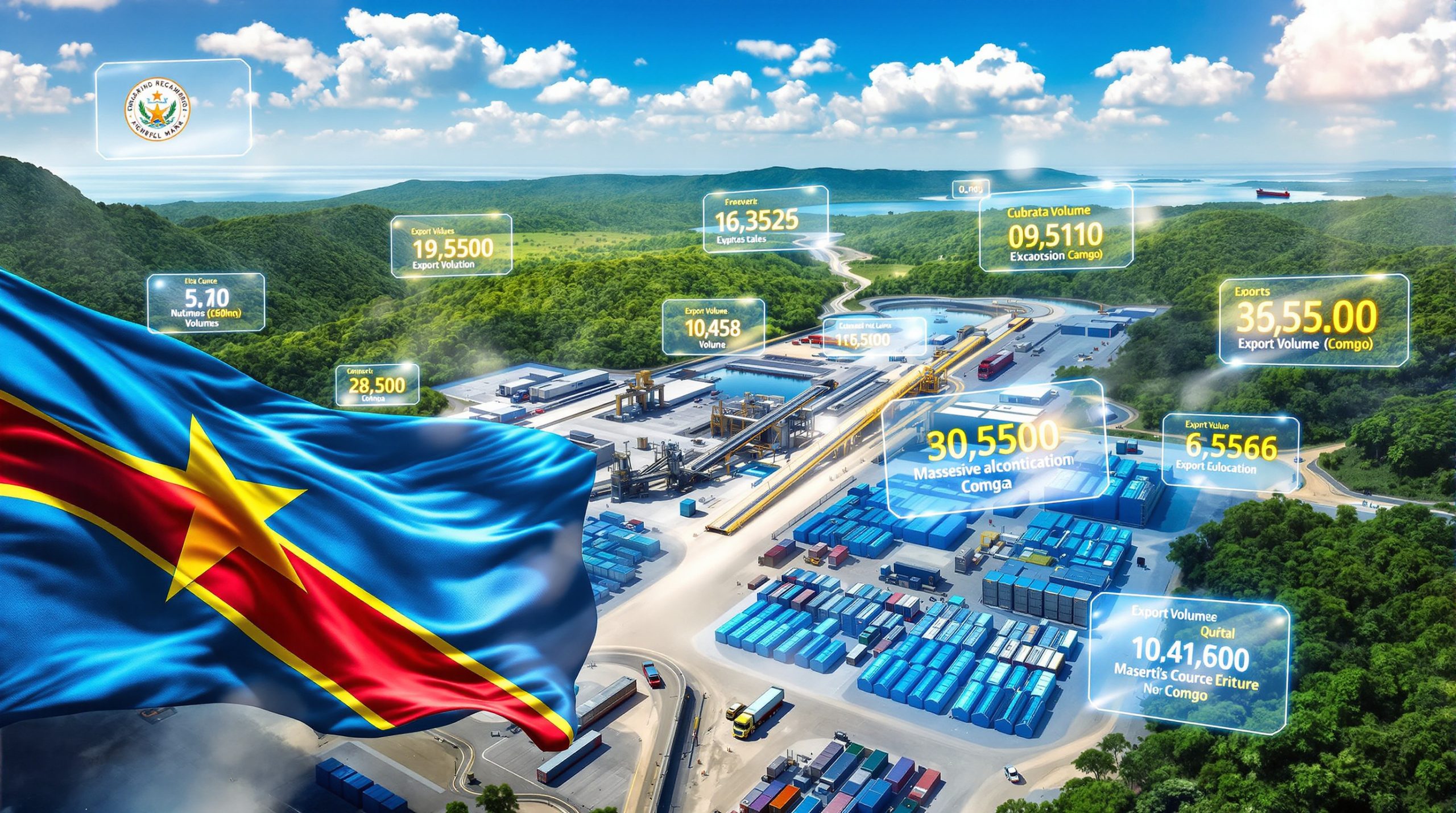Understanding the Strategic Framework Behind China's Rare Earth Restrictions
China's latest export controls on rare earth elements represent far more than routine trade policy adjustments. These measures target critical materials that power everything from electric vehicle motors to military defense systems, fundamentally altering the global technology supply chain landscape.
The framework introduced in October 2025 focuses on processed rare earth materials rather than raw ores, demonstrating Beijing's strategic understanding of value-added manufacturing. This approach maximises China's leverage while maintaining plausible justifications for the restrictions as responsible resource management.
Key aspects of China's strategic approach include:
• Targeting high-value processed materials rather than raw extraction
• Implementing graduated licensing requirements instead of blanket bans
• Framing measures as national security and resource conservation efforts
• Maintaining flexibility to adjust restrictions based on diplomatic developments
The timing coincides with escalating trade tensions, serving as both defensive response and negotiating tool. Industry experts note that China's approach differs significantly from previous commodity restrictions, showing greater sophistication in balancing economic interests with strategic objectives.
Which Rare Earth Elements Face Export Restrictions?
The export controls target seventeen specific elements crucial to modern technology manufacturing. These materials form the backbone of numerous high-tech applications, from consumer electronics to renewable energy systems. Furthermore, these energy transition minerals are becoming increasingly vital for global decarbonisation efforts.
Critical Elements Under Control:
| Element Group | Key Materials | Primary Applications |
|---|---|---|
| Light Rare Earths | Neodymium, Praseodymium | Permanent magnets, catalysts |
| Heavy Rare Earths | Dysprosium, Terbium | High-temperature magnets, phosphors |
| Specialty Elements | Scandium, Yttrium | Aerospace alloys, laser systems |
Processing Stages Affected:
• Refined oxides and metals
• Permanent magnet alloys
• Specialised chemical compounds
• Semi-finished manufacturing components
The restrictions specifically target materials with defence and advanced technology applications. Manufacturing sectors report particular concern over dysprosium and terbium availability, as these heavy rare earths prove essential for high-performance permanent magnets operating in extreme temperatures.
Scandium, though produced in smaller quantities, faces especially tight controls due to its aerospace and defence applications. This lightweight metal enhances aluminium alloy strength while reducing weight, making it invaluable for military aircraft and missile systems.
How Do China's Export Controls Actually Work?
China's licensing system creates regulatory bottlenecks designed to control material flows without completely severing trade relationships. The process involves multiple approval stages, each adding potential delays and scrutiny points.
Licensing Process Overview:
-
Initial Application: Companies must submit detailed export plans including end-user certifications
-
Technical Review: Authorities evaluate material specifications and intended applications
-
Security Assessment: National security implications undergo separate evaluation
-
Final Approval: Permits granted for specific quantities and timeframes
The system differentiates between domestic and international buyers, with foreign purchasers facing additional documentation requirements. Processing times vary significantly, ranging from several weeks to multiple months depending on destination countries and material sensitivity.
Implementation Scope:
Unlike blanket export bans, the controls maintain selective availability while creating strategic leverage points. Chinese authorities retain discretionary power to accelerate or delay approvals based on diplomatic considerations and bilateral relationship status.
This graduated approach allows Beijing to demonstrate restraint while maintaining pressure capabilities. Industry sources report that approval rates and processing speeds correlate closely with broader U.S.-China diplomatic climate indicators.
What Industries Are Most Vulnerable to Supply Chain Disruption?
Manufacturing sectors dependent on rare earth components face varying degrees of vulnerability based on their China rare earth export controls exposure and alternative sourcing capabilities. In addition, the impact varies significantly depending on whether these materials can be sourced from an Australian strategic reserve or alternative suppliers.
High-Impact Sectors Analysis:
| Industry | Dependency Level | Key Vulnerabilities | Alternative Sources |
|---|---|---|---|
| Electric Vehicles | Critical | Motor magnets, battery materials | Limited, developing |
| Wind Energy | High | Generator magnets, control systems | Australia, limited capacity |
| Defence Systems | Critical | Guidance systems, communications | Strategic reserves only |
| Consumer Electronics | High | Displays, speakers, semiconductors | Some substitution possible |
| Medical Equipment | Moderate | MRI systems, X-ray equipment | Recycling, limited alternatives |
Automotive Sector Vulnerability:
Electric vehicle manufacturers face particular exposure due to permanent magnet motor requirements. A typical EV motor contains approximately two kilograms of neodymium-iron-boron magnets, with premium models requiring additional dysprosium for high-temperature performance.
The automotive transition to electrification has created unprecedented demand for rare earth permanent magnets, with global EV production requiring an estimated 40,000 tons of neodymium annually by 2030.
Renewable Energy Dependencies:
Wind turbine generators rely heavily on rare earth permanent magnets for direct-drive systems. Each offshore wind turbine contains approximately 600 kilograms of rare earth materials, primarily neodymium and dysprosium, making the renewable energy sector particularly vulnerable to supply disruptions.
The defence industry maintains strategic stockpiles but faces longer-term sustainability challenges. Advanced weapon systems incorporate rare earth elements in guidance systems, radar equipment, and electronic warfare capabilities, with limited substitution possibilities.
Why Has China Implemented These Controls Now?
The October 2025 timing reflects multiple converging factors creating both opportunity and necessity for Beijing to assert its rare earth dominance more aggressively. However, this comes after the US critical minerals order demonstrated Washington's intention to reduce dependence on Chinese supplies.
Strategic Motivations:
China frames these measures through several complementary narratives, each targeting different international audiences. Officials emphasise responsible resource stewardship, citing environmental protection and sustainable development goals as primary justifications.
The broader geopolitical context reveals more complex motivations. According to CNBC analysis, this represents a significant escalation in the ongoing trade tensions between Washington and Beijing, with both sides preparing for extended negotiations.
Comparative Regulatory Context:
Beijing's Commerce Ministry highlights significant disparities in export control scope between the two superpowers. The United States maintains export controls on over 3,000 items compared to China's approximately 900 categories, creating what Chinese officials characterise as a double standard in international trade policy.
Narrative Battle Dynamics:
According to analysis from the University of International Business and Economics in Beijing, the current exchange represents fundamentally a battle of competing narratives, with both nations seeking to shape international perception while applying maximum pressure until negotiations produce agreements.
Commerce Ministry spokeswoman He Yongqian stated that U.S. characterisations severely distort and exaggerate China's measures, deliberately causing unnecessary misunderstanding and panic in global markets.
The People's Daily emphasised that comprehensive assessments demonstrate minimal supply chain impacts, positioning China as a responsible global partner focused on maintaining international stability.
How Significant Is China's Global Rare Earth Dominance?
China's control over rare earth supply chains extends far beyond raw material extraction, encompassing critical processing and manufacturing capabilities that create multiple dependency layers for international buyers.
Market Control Statistics:
| Supply Chain Stage | China's Market Share | Global Dependency Level |
|---|---|---|
| Raw Material Mining | 58% | High |
| Processing and Refining | 85% | Critical |
| Permanent Magnet Production | 92% | Near-monopoly |
| Rare Earth Chemicals | 78% | High |
Geographic Concentration Risks:
China's dominance stems from decades of strategic investment in processing infrastructure while other nations focused primarily on extraction capabilities. This processing gap creates structural dependencies that cannot be resolved through alternative mining alone.
Technological Integration:
Chinese companies have developed integrated supply chains linking mining, processing, and manufacturing operations. This vertical integration provides cost advantages and quality control benefits that international competitors struggle to match.
The concentration creates systemic risks extending beyond individual company dependencies. Entire technology sectors rely on Chinese rare earth processing capabilities, making supply chain diversification efforts complex and costly.
Processing Complexity Barriers:
Rare earth processing involves environmentally challenging chemical separation processes requiring specialised expertise and significant capital investment. China's decades-long learning curve in rare earth metallurgy creates substantial barriers for nations attempting rapid supply chain development.
What Are the Immediate Impacts on Global Manufacturing?
Manufacturing companies report widespread disruptions as the new licensing requirements create uncertainty and delays throughout international supply chains. Consequently, this has prompted several nations to accelerate their alternative sourcing strategies.
Supply Chain Disruptions:
Companies dependent on Chinese rare earth imports face extended approval timelines ranging from several weeks to multiple months. The uncertainty has triggered inventory stockpiling behaviours as manufacturers attempt to buffer against potential shortages.
Price Volatility Patterns:
Markets for affected rare earth materials show increased volatility as buyers navigate licensing uncertainties. Neodymium oxide prices have experienced 15-20% fluctuations since the controls implementation, while dysprosium costs have risen approximately 25% due to supply concerns.
Manufacturing Adaptation Strategies:
Industrial buyers are implementing multiple risk mitigation approaches:
• Increasing strategic inventory levels for critical materials
• Developing relationships with alternative suppliers outside China
• Investing in material recycling and recovery technologies
• Exploring substitute materials for less critical applications
Procurement Process Changes:
Purchasing departments report significant increases in administrative overhead as they navigate China's licensing requirements. Documentation processes that previously required minimal attention now demand specialised expertise and extended preparation timelines.
The uncertainty affects planning cycles, with companies struggling to provide accurate delivery commitments to customers. This planning difficulty cascades through supply chains, affecting production scheduling and inventory management across multiple industries.
How Are Other Countries Responding to China's Export Controls?
International responses vary significantly based on strategic relationships, domestic capabilities, and economic dependencies on Chinese rare earth supplies. For instance, Greenland critical minerals have become increasingly attractive as an alternative source for Western nations.
United States Government Response:
The Trump administration has adopted an aggressive rhetorical stance, characterising the restrictions as evidence of Chinese unreliability in global trade relationships. Treasury Secretary Scott Bessent and Trade Representative Jamieson Greer held joint news conferences emphasising the strategic threat posed by Chinese controls.
European Union Approach:
European officials have expressed concerns about supply security while avoiding the confrontational language employed by Washington. The EU focuses on accelerating Critical Raw Materials Act implementation and strengthening partnerships with alternative suppliers. Meanwhile, a proposed European CRM facility represents a significant step towards supply chain independence.
Industrial Policy Responses:
Western governments are accelerating investment in domestic rare earth capabilities through various mechanisms:
• Direct government funding for mining and processing projects
• Tax incentives for rare earth recycling technologies
• Strategic partnership agreements with allied nations
• Research grants for material substitution development
Regional Cooperation Initiatives:
The Quad partnership (United States, Japan, Australia, India) has intensified rare earth cooperation discussions, focusing on creating China-independent supply chains for critical materials.
Australia and Canada are positioning themselves as reliable alternative suppliers, though their processing capabilities remain limited compared to Chinese infrastructure.
What Alternative Rare Earth Sources Exist Outside China?
Developing alternative rare earth supply chains requires coordinated international effort spanning mining, processing, and manufacturing capabilities.
Emerging Supply Options:
| Region | Current Capacity | Development Timeline | Key Challenges |
|---|---|---|---|
| Australia | 15,000 tons/year | 2-3 years expansion | Processing infrastructure |
| United States | 8,000 tons/year | 3-5 years development | Environmental permits |
| Canada | 3,000 tons/year | 5-7 years potential | Capital investment |
| Brazil | 2,500 tons/year | Long-term prospects | Technology transfer |
Processing Capability Gaps:
While several nations possess rare earth mining potential, processing capabilities remain concentrated in China. Developing separation and refining infrastructure requires substantial capital investment and environmental management expertise.
Investment Requirements:
Industry estimates suggest that creating China-independent rare earth supply chains requires approximately $50-75 billion in global investment over the next decade. This includes mining expansion, processing facility construction, and manufacturing capability development.
Recycling Potential:
End-of-life recycling presents significant opportunities for reducing Chinese dependencies. Electronic waste contains substantial rare earth concentrations, with recycling potentially providing 20-25% of global demand by 2035.
Technical Barriers:
Alternative suppliers face significant technical challenges in achieving Chinese cost and quality standards. Rare earth processing requires specialised metallurgical knowledge developed over decades of industrial experience.
### How Might China rare earth export controls Evolve in the Future?
China's approach suggests preference for graduated pressure rather than complete supply cutoffs, maintaining economic benefits while exercising strategic influence.
Potential Escalation Scenarios:
The licensing regime could expand to cover additional materials or processing stages based on diplomatic developments. Historical patterns suggest China prefers calibrated responses that maintain negotiating leverage without triggering complete supply chain diversification.
According to Reuters reporting, Beijing's Commerce Ministry indicated that further restrictions could target downstream manufacturing processes if diplomatic tensions continue to escalate.
Diplomatic Resolution Possibilities:
Both nations share incentives for eventual compromise, as complete decoupling would impose substantial costs on Chinese rare earth industries while severely disrupting American manufacturing capabilities.
Long-term Market Evolution:
These controls may accelerate permanent changes in global rare earth trade patterns:
• Development of regional supply chains reducing Chinese dependency
• Increased investment in recycling and material efficiency technologies
• Strategic partnerships between allied nations for critical material security
• Enhanced government involvement in rare earth supply chain management
Technology Development Impacts:
Supply constraints may accelerate research into rare earth-free alternatives for certain applications. Permanent magnet technologies using abundant materials could reduce strategic dependencies in specific sectors.
The controls might also stimulate innovation in rare earth recycling and processing technologies, potentially creating new competitive dynamics in global markets.
### What Should Businesses Do to Prepare?
Companies dependent on rare earth materials must develop comprehensive risk management strategies addressing both immediate supply disruptions and long-term strategic positioning.
Immediate Risk Mitigation Steps:
• Diversify Supplier Networks: Establish relationships with non-Chinese rare earth sources, even if initially more expensive
• Increase Strategic Inventory: Build buffer stocks for critical rare earth components, balancing carrying costs against supply security
• Document Supply Chains: Create detailed mapping of rare earth dependencies throughout product lines
• Monitor Regulatory Changes: Establish systems for tracking Chinese licensing requirements and diplomatic developments
Strategic Planning Considerations:
Businesses should evaluate their rare earth exposure levels and develop contingency plans for various supply disruption scenarios. This includes assessing substitution possibilities, alternative sourcing timelines, and cost implications of supply chain modifications.
Investment Priorities:
Companies with significant rare earth dependencies should consider investing in recycling technologies, material efficiency improvements, and alternative material research. These investments provide both risk mitigation and potential competitive advantages.
Collaborative Approaches:
Industry consortiums and government partnerships offer opportunities for sharing costs and risks associated with supply chain diversification. Collective action can accelerate alternative supplier development while distributing investment requirements.
Disclaimer: This analysis involves forecasts and speculation about future market developments and geopolitical relations. Actual outcomes may differ significantly from predictions presented. Businesses should conduct independent risk assessments and consult with qualified advisors before making strategic decisions based on this information.
Looking to Capitalise on Critical Minerals Market Volatility?
Discovery Alert's proprietary Discovery IQ model delivers instant notifications on significant ASX mineral discoveries, including critical minerals like rare earths that are reshaping global supply chains. With geopolitical tensions creating unprecedented opportunities in the resources sector, subscribers gain actionable insights to identify the next major breakthrough before the broader market catches on. Start your 30-day free trial today to position yourself ahead of these rapidly evolving market dynamics.




